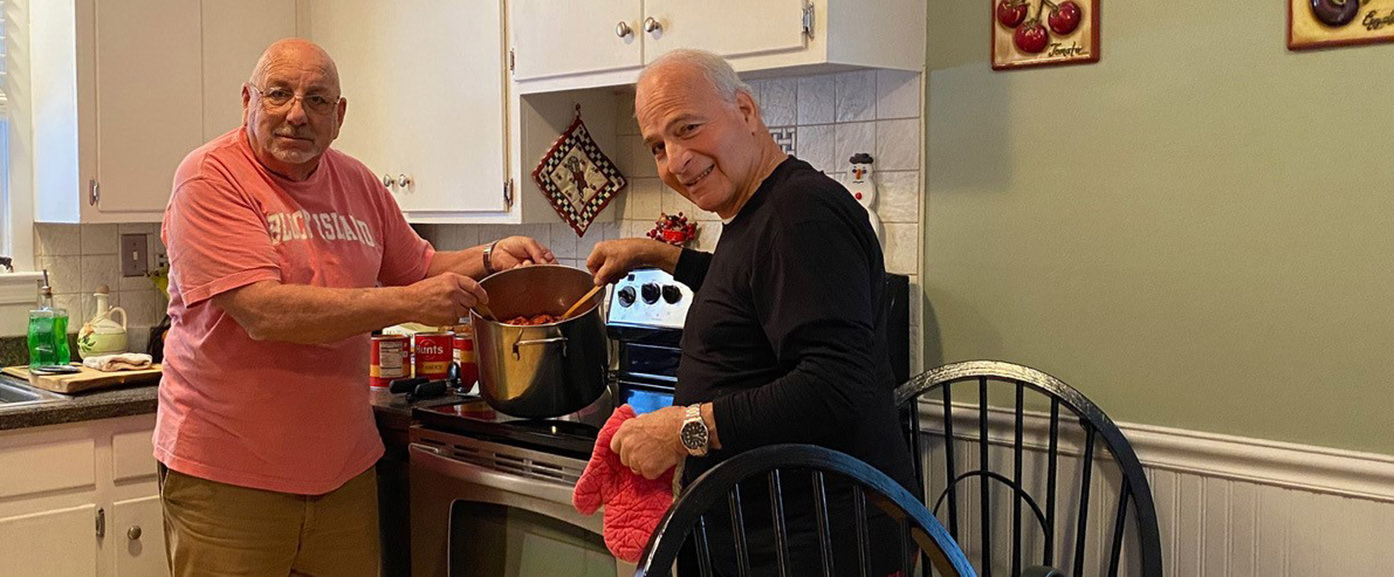Written by Art Petrosemolo
Recently, my editor of the Ephrata Review asked me what I was going to write about for Christmas. She was thinking cookies and I told her it was too late for me to start researching Christmas cookies but as a third generation Italian-American, I could write about our Christmas Eve vigil meal which is a multi-course, three hour, fish extravaganza that she called the feast of the seven fishes. I told her that the Petrosemolo family ate a lot more than seven types of fish on Christmas Eve and if she was interested, I’d have the story to her in three days. She was intrigued and signed off on the project.
For several years, I was the chief communications officer at a large university and worked directly for the president. He was a big-time “foody” and a member of the prestigious French food and wine society Chaine des Rotisseurs. He firmly believed more could be accomplished sitting down with colleagues and business associates over a good meal than could ever be done across a conference table. I agreed and told him it was what Italians have been doing for years.
I am an American of Italian extraction from New Haven, CT, the city with the most (21.2%) Italian-Americans in the United States. My grandparents came from Naples and my extended family always celebrated Christmas Eve—the Vigil—as the biggest night of the Christmas season and we continue that tradition to this day.
Before I started to write, I was curious how many Italian-Americans lived in Lancaster County. An accurate count of County’s residents of Italian heritage is hard to pinpoint although in Lancaster City, some five percent of the residents self-identify themselves with Italian roots. Nella Caponi Seward, a native of Rome, who lives in Mountville, is a charter member of the Lancaster Italian Cultural Society that runs events during the year and supports a number of educational programs. She believes that the number of Italian Americans in the County may be closer to 10 percent with a recent influx of new residents moving to Central Pennsylvania from the New York metropolitan area. Nella will host her extended family of 25 for her “La Vigilia” on Christmas Eve.
So Italian-Americans plan for weeks and work for days to prepare the vigil meal. Fish is the focus of the meal because in the good old days, Italian-American Catholics abstained from eating meat on Christmas Eve as a centuries old fasting tradition and Catholics still abstain from meat on Fridays during Lent.
Even in 1966 when the Catholic Bishops relaxed the rules for abstaining from meat on Christmas Eve, most Italian-Americans still made fish the focus of the meal. The fish tradition got its start in Southern Italy as the faithful ate and waited for midnight mass to celebrate the birth of the baby Jesus.
Italians never start a feast with a main course. The meal has multiple courses and may take two hours or more to consume. It usually requires a table or even two tables to accommodate family and guests that usually number a dozen or more.
The meal usually starts with an antipasto that is consumed while the pasta is cooking. For Christmas Eve, a typical antipasto—usually served on one or two huge plates family style—may include cheeses, lettuce, tomatoes, eggplant, sardines and a variety of pickled vegetables. My family always uses canned tuna fish on antipasto and at Christmas may add small fish called smelts as well as Scungilli (sea snail) or calamari salad.
Our pasta course is the Petrosemolo family’s main course for the vigil and is made with homemade (blue) crab sauce. The recipe has been passed down for several generations. It is a rich, thick, red sauce served over linguini and garnished with pieces of the crab used in its preparation. I make it but not as well as my brother-in-law (Clement) who’s family is from Sicily so I follow his recipe to the letter and, if possible, make a road trip to Connecticut just before Christmas to prepare it with him as I did this year.
The fish course may be served before or after the pasta depending on your family’s preference and can include clams and mussels (raw, fried, baked/stuffed, Casino, or prepared a myriad of other ways), baccala (cod), which is not my favorite fish but tradition says it must be on the table, shrimp (cold, fried, stuffed or all three ways) and maybe razor clams if they are available. For my family, the fish comes before the pasta and crab sauce so you have to pace yourself and that can be difficult.
There always, and I mean, always, is way more food than two families can consume in one sitting but that’s just the way it is. My mom’s Christmas Eve dinners served close to 20 people and there were still leftovers.
Both red and white wine is served with the meal and it is followed with strong Italian (Espresso) coffee. After the table is cleared and some basic dishwashing and straightening up completed, the meal will end with fresh fruit, nuts and cheese, chestnuts, Panettone, nuts, Torrone, cookies and Italian pastries. The meal can be a belly buster—one that may linger into Christmas Day. We try to eat in moderation but usually aren’t successful. And for years, the first Christmas mass celebration for Catholics was at midnight and many times we went to church in physical distress from over-eating. But it is a favorite memory from my formative years and one I would not trade.
